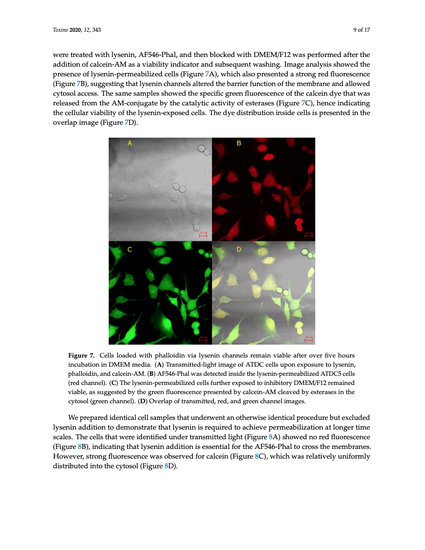
Pore-forming toxins are alluring tools for delivering biologically-active, impermeable cargoes to intracellular environments by introducing large conductance pathways into cell membranes. However, the lack of regulation often leads to the dissipation of electrical and chemical gradients, which might significantly affect the viability of cells under scrutiny. To mitigate these problems, we explored the use of lysenin channels to reversibly control the barrier function of natural and artificial lipid membrane systems by controlling the lysenin’s transport properties. We employed artificial membranes and electrophysiology measurements in order to identify the influence of labels and media on the lysenin channel’s conductance. Two cell culture models: Jurkat cells in suspension and adherent ATDC5 cells were utilized to demonstrate that lysenin channels may provide temporary cytosol access to membrane non-permeant propidium iodide and phalloidin. Permeability and cell viability were assessed by fluorescence spectroscopy and microscopy. Membrane resealing by chitosan or specific media addition proved to be an effective way of maintaining cellular viability. In addition, we loaded non-permeant dyes into liposomes via lysenin channels by controlling their conducting state with multivalent metal cations. The improved control over membrane permeability might prove fruitful for a large variety of biological or biomedical applications that require only temporary, non-destructive access to the inner environment enclosed by natural and artificial membranes.
Available at: http://works.bepress.com/daniel_fologea/43/
